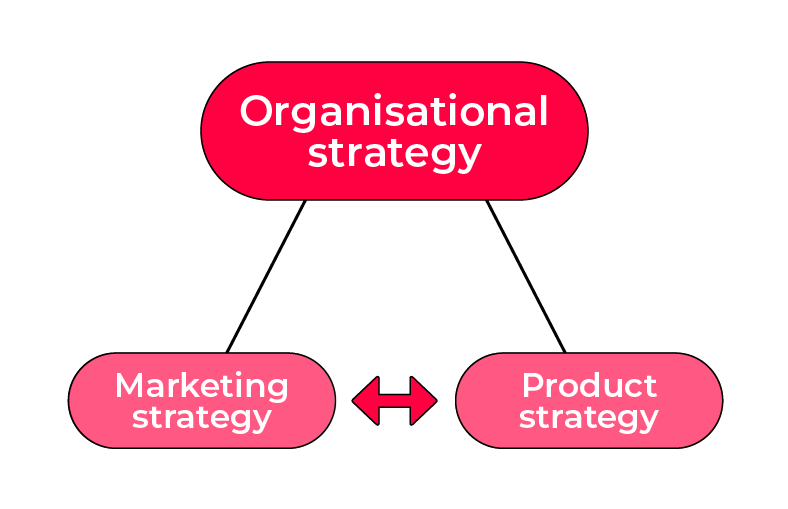As digital enables more business models to pivot to direct-to-consumer propositions, and products on offer increasingly resemble services, marketers must have a firm grip on the interplay between marketing strategy and product strategy.
But what is product strategy? And what is product marketing?
This article is an excerpt taken from Econsultancy’s Product Strategy and Marketing Best Practice Guide.
What is product strategy?
As with marketing strategy, product strategy should flow from the wider business strategy. In a business with digital products and/or services, both marketing and product strategy should be intertwined with a close relationship between the two.
The product strategy should translate the wider business strategy into a high-level plan for how the product can fulfil the objectives of the business, incorporating a definition of who the product is being built for (the personas), the vision for how the product will serve the needs of those personas and what the product goals are through its lifecycle. A good product strategy creates alignment and direction, enabling all those involved with the product (including development, marketing, sales, customer success) to see how their work is contributing towards the achievement of organisational goals.
Figure 1: Linking business strategy to marketing and product

Source: Econsultancy
Collaborative strategy creation
“Strategy creation is now a collaborative process. You can’t create marketing and product strategy in isolation – it needs to be joined up from the start.”
Fiona Spooner, Global Marketing Director, B2C, Financial Times
Product management and product owners
Product management has steadily grown in importance as a discipline and role within organisations. Traditionally, product managers deal with the product across its entire lifecycle from development and business cases, through to planning, forecasting, launching and pricing, and they will even get involved with the product marketing. McKinsey has described product managers as “the glue that bind the many functions that touch a product – engineering, design, customer success, sales, marketing, operations, finance, legal, and more”. It continues: “They not only own the decisions about what gets built but also influence every aspect of how it gets built and launched.”
The natural connection between marketing and product functions within organisations will often be through product managers.




